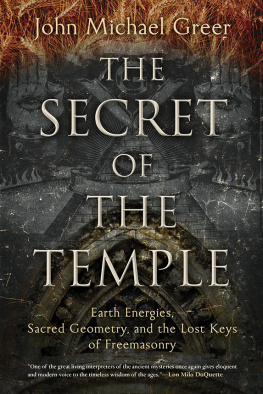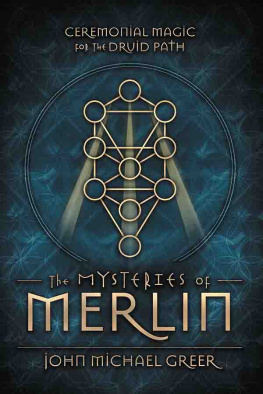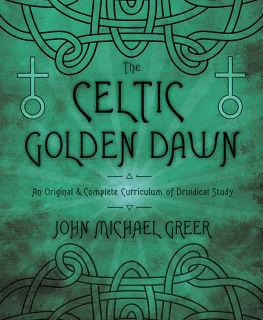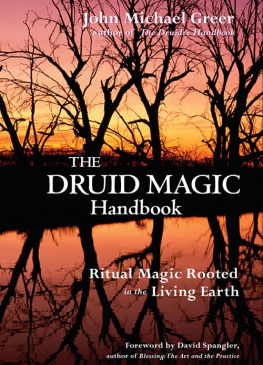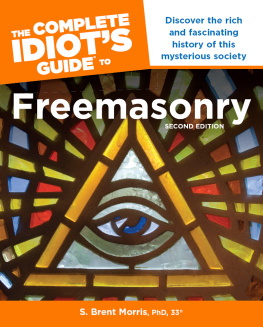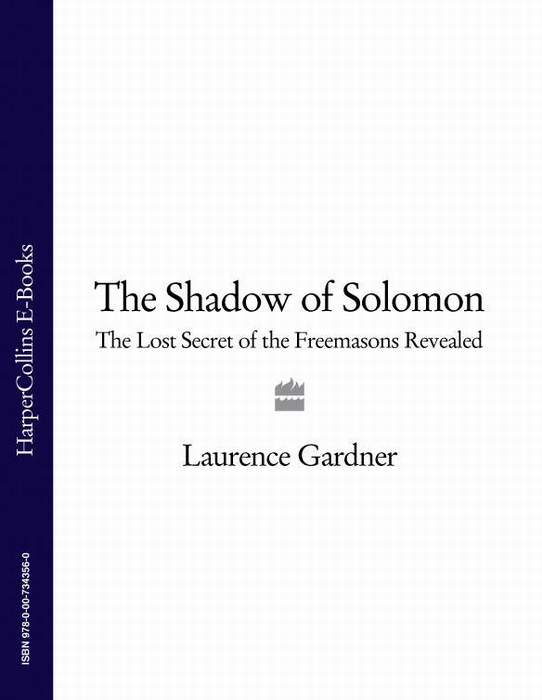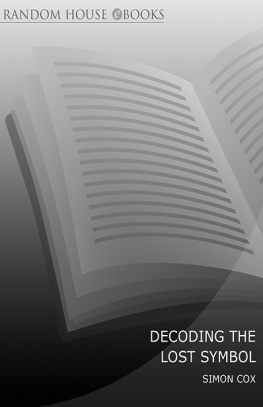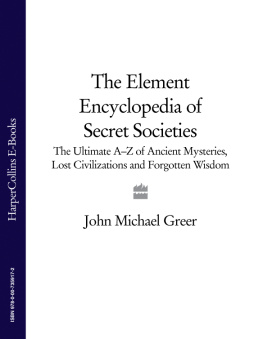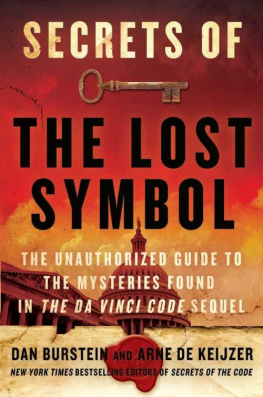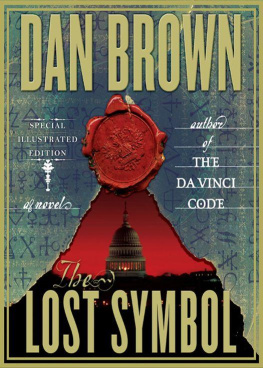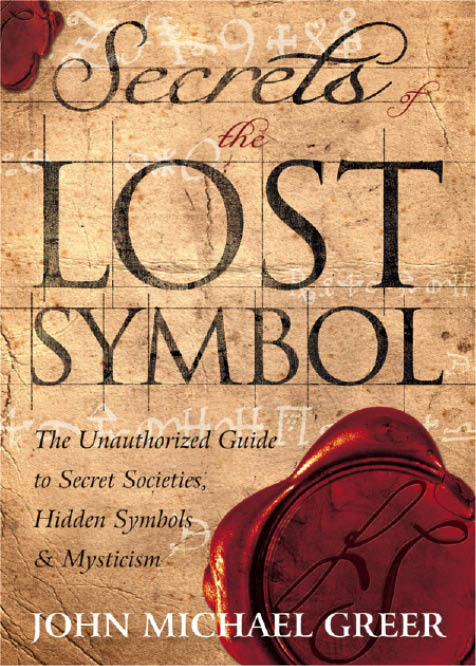
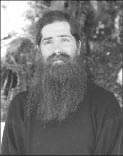
About the Author
A student of magic and the unexplained for more than thirty years and the author of more than a dozen books, including the award-winning New Encyclopedia of the Occult , John Michael Greer has earned a reputation as one of the most original writers in the occult field today. His background combines academic study in the history of ideas with training and initiation in several occult and Druid orders. He lives in the mountains of southern Oregon with his wife, Sara.
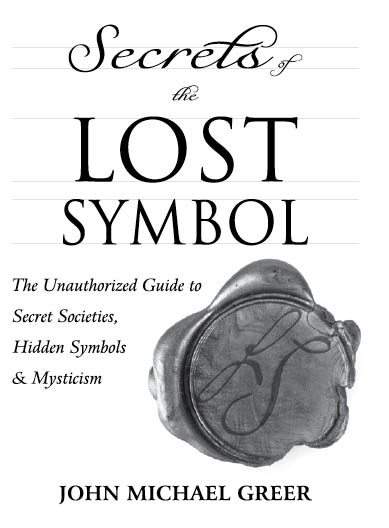

Llewellyn Publications
Woodbury, Minnesota
Secrets of the Lost Symbol: The Unauthorized Guide to Secret Societies, Hidden Symbols & Mysticism 2009 by John Michael Greer.
All rights reserved. No part of this book may be used or reproduced in any matter whatsoever, including Internet usage, without written permission from Llewellyn Publications, except in the form of brief quotations embodied in critical articles and reviews.
As the purchaser of this e-book, you are granted the non-exclusive, non-transferable right to access and read the text of this ebook on screen. The text may not be otherwise reproduced, transmitted, downloaded, or recorded on any other storage device in any form or by any means.
Any unauthorized usage of the text without express written permission of the publisher is a violation of the authors copyright and is illegal and punishable by law.
First e-book edition 2010
E-book ISBN: 9780738722801
Cover art: background parchment iStockphoto.com/Duncan Walker
and wax seal iStockphoto.com/Stefan Klein
Cover design by Kevin R. Brown
Project management by Tom Bilstad
Excerpted from The New Encyclopedia of the Occult (Llewellyn, 2003)
Llewellyn Publications is an imprint of Llewellyn Worldwide Ltd.
Llewellyn Publications does not participate in, endorse, or have any authority or responsibility concerning private business arrangements between our authors and the public.
Any Internet references contained in this work are current at publication time, but the publisher cannot guarantee that a specific reference will continue or be maintained. Please refer to the publishers website for links to current author websites.
Llewellyn Publications
Llewellyn Worldwide Ltd.
2143 Wooddale Drive
Woodbury, MN 55125
www.llewellyn.com
Manufactured in the United States of America
introduction
While the The Lost Symbol by Dan Brown may be a work of fiction, the author includes many elements of reality and truth in his book, especially occult lore. (The word occult merely means hidden.) But when the lines between reality and fiction are blurred, especially in a mystery novel such as The Lost Symbol, just how much is really the truth, and what is merely fiction?
The Secrets of the Lost Symbol is here to aid in understanding the occult truth behind the hidden lore found in The Lost Symbol. Arranged as encyclopedic entries, this reference book is meant to supplement The Lost Symbol. (For those who havent read the novel yet, there are no spoilers in this book!) As a bonus, some of the occult elements hinted at in The Lost Symbol can be found here, too, which will add an even deeper meaning to the occult and open truths used in Dan Browns latest novel.
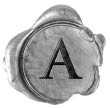
Abramelin the Mage, The Sacred Magic of : A grimoire preserved in a single eighteenth-century copy in the Bibliotheque de lArsenal in Paris. Written in French, it claims to be a translation of a Hebrew original dating from 1458, although scholars have cast doubt on this claim.
According to the long preface, it represents the teachings of a Jewish magician named Abramelin, passed on by him to his student Abraham, and by the latter to his son Lamech. These teachings, which Abraham describes as the only valid magical system in the world, require the student to devote six months of prayer, repentance, and ritual to obtain the Knowledge and Conversation of the Holy Guardian Angel. After this accomplishment, the student gains the power to command evil spirits through talismans composed of letter combinations.
The Sacred Magic was rediscovered in the late 1890s by Golden Dawn founder Samuel Mathers (18541918), and Mathers English translation was published in 1898. It has had a major impact on magical thinking ever since, especially through its influence on Aleister Crowley (18751947), who used it as the template for much of his own understanding of magic. To this day the idea that magic is or should be directed toward the knowledge and contemplation of ones Holy Guardian Angela concept not found outside this work in older sourcesis commonplace in magical writings.
The book itself, however, developed a sinister reputation among occultists in the early part of this century. Dire accidents and mental imbalance were held to have befallen many of those who owned a copy of the original printing, or who tried to use the talismans contained in it.
adept: (from Latin adeptus , skillful) In most systems of Western occult thought, a title or grade used for (and by) advanced students of magic, alchemy, and other occult subjects. In alchemical tradition, only those capable of making the Philosophers Stone were considered adepts. In modern ceremonial magic, similarly, the title is usually reserved for those who have penetrated the Veil of the Sanctuary and entered into contact with their Higher Genius or Holy Guardian Angel.
Some confusion has been caused over the years by the use of adept in occult lodges as a grade of initiation, since those who have passed through a given grade ritual may or may not have attained the spiritual experience that grade represents. As a result, the term has passed out of use in many parts of the magical community, except as a label for these grades.
Adonai: (Hebrew ADNI, Lord) One of the traditional Hebrew names of God, usually assigned to the tenth Sephirah of the Tree of Life, Malkuth. In reading the Bible aloud in Jewish religious services, this name is used whenever the text gives YHVH, the Tetragrammaton, which is considered too sacred to vocalize.
Adonai was among the first of the Jewish divine names to be taken up by non-Jewish magicians, and appears frequently in classical magical texts such as the Graeco-Egyptian magical papyri. The relation of this name to the God of the Old Testament was sometimes remembered and sometimes completely forgotten; in some sources, Adonai or Adonaios is an angel, in others an independent divine being, and in still others an archonthat is, a power of ignorance or evil.
Adoptive Masonry: Any of several quasi-Masonic lodge systems for women, usually organized and run by male Freemasons. Many such systems came into existence in the eighteenth century, spurred by the success of the Mopses and other orders open to both genders. The Grand Orient of France in 1774 organized these into a rite of three degrees called the Rite of Adoption.
In the United States, the Order of the Eastern Star is the most popular adoptive rite, although there are several others. None of these rites seems to have included much in the way of occult content, but adoptive lodges once played an important role in training women in initiatory ritual and lodge managementskills that were sometimes put to use in more explicitly magical contexts.
Next page

